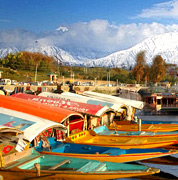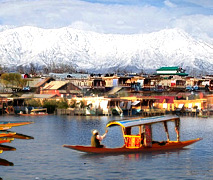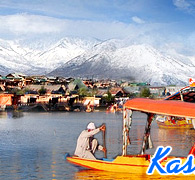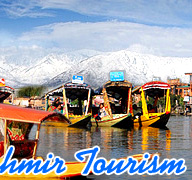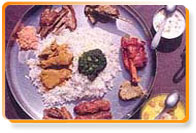 In the olden times, almost every Kashmiri home in the
plains had a professional Kashmiri cook in residence, who were the
masters of their art. Pure ghee and mustard oil was used freely and
every mealtime was an event in itself. Gradually and with time, the
ladies of the household learnt the art under the specialized training of
these culinary masters and became as proficient as their 'gurus'. As the
living costs increased with time, the era of the super cooks came to an
end. However, their art has not all lost.
In the olden times, almost every Kashmiri home in the
plains had a professional Kashmiri cook in residence, who were the
masters of their art. Pure ghee and mustard oil was used freely and
every mealtime was an event in itself. Gradually and with time, the
ladies of the household learnt the art under the specialized training of
these culinary masters and became as proficient as their 'gurus'. As the
living costs increased with time, the era of the super cooks came to an
end. However, their art has not all lost. One can frequently taste the delicacies mastered by the chefs at Kashmiri weddings. Kashmiri cuisine that evolved in the Valley several centuries ago acquired some of the scrumptious elements of the Mughal art of cooking and yet has retained a distinct personality of its own. There were two great schools of culinary craftsmanship in Kashmir, namely those of Kashmiri Pandits and Kashmiri Muslims. The basic difference between the two schools was that the abundant use of heeng (asafetida) and curd among the Hindus and the open-handed use of onions and garlics among the Muslims.
Hindu Brahmins or Kashmiri Pandits are not averse to eating meat and are rather voracious meat eaters. However, they prefer goat and that too a young one. The meat is generally chosen from the legs, neck, breast, ribs and shoulders and cut into large pieces. No vegetarian or non-vegetarian dish, except certain kababs, is cooked without curd. The Kashmiris often cook their food by heating it on two sides, from both top and bottom for that distinctive taste. The charcoal fire was their solution in the earlier days but oven serves as a good substitute these days.
Originally, Kashmiri Pandits avoided onions and garlics but now many of them have acquired a taste for them and include them in certain recipes as optional. Though the basic principles of cooking are largely similar in almost all homes, certain Pandit families have adopted minor changes in both ingredients and methods. The most important of the retained traits are the liberal use of aromatic spices and the avoidance of onion and garlic in some homes. Kabargah, Kofta, Dum Alu, Methi Chaman and Firni are some of the delicacies of the region known for their sheer flavor and richness.
Kashmiri Muslims offer another gold mine of gourmet though except for the few restaurants and regional stalls in the country, this art is near extinction. Largely confined to Kashmiri homes in and out of the Valley, the professional cooks and masters of the art are known as 'wazas'. These people claim to be the descendants of the master chefs who migrated from Samarkand and parts of Central Asia at the beginning of the fifteenth century and were a vital part of the entourage that came to Kashmir during the reign of Timur (or Tamarlane).
In the earlier days, the traditional Kashmiri Muslim banquet known as Wazwan, a feast fit for kings, which was perhaps the most unique and elaborate royal spread of meat and delicacies compared to the other parts of India. Comprising of thirty-six courses, fifteen to thirty dishes of Wazwan are varieties of meat. Many of the delicacies are cooked through the entire night under the expert supervision of a Vasta Waza or head chef, assisted by an entourage of wazas under him. Kashmir's most formal meal, Wazwan is not only a ritual but also a ceremony. Traditionally, no spoons, forks or knives are used for eating food. Eaten with fingers, getting invited to a Wazwan is a rare luxury that one can enjoy these days.




